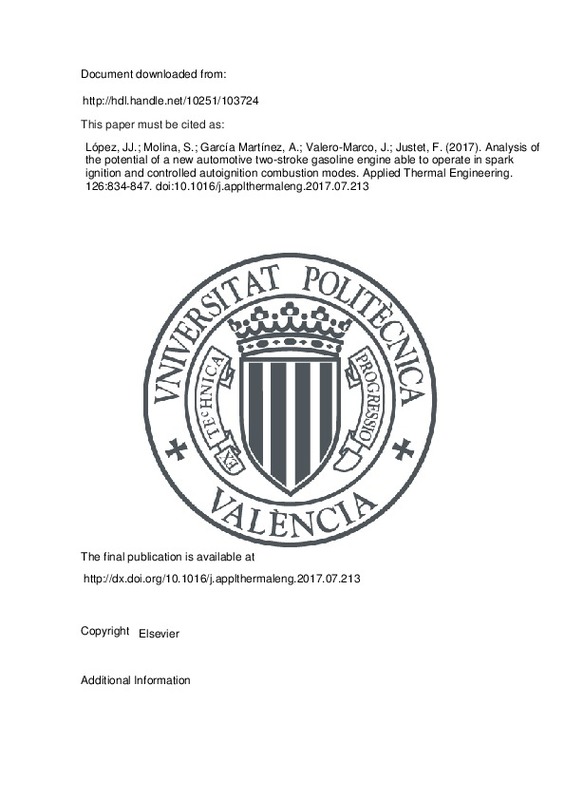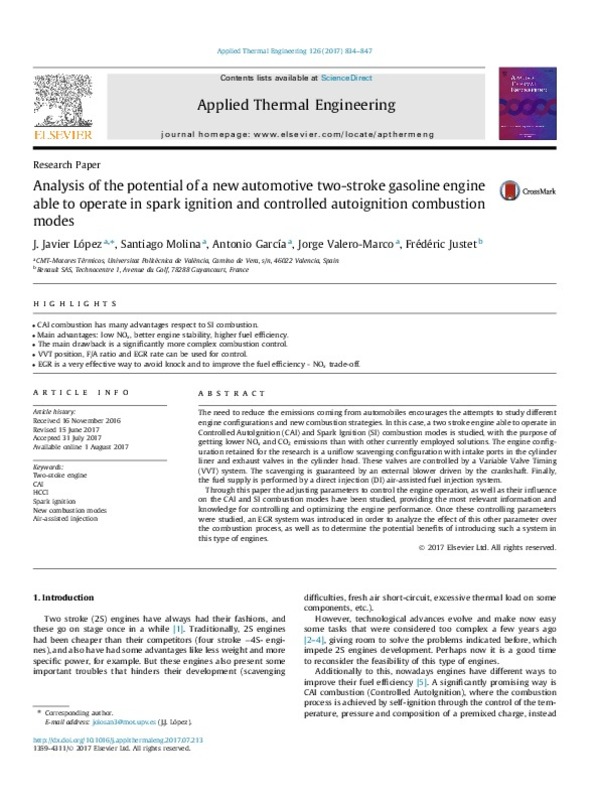JavaScript is disabled for your browser. Some features of this site may not work without it.
Buscar en RiuNet
Listar
Mi cuenta
Estadísticas
Ayuda RiuNet
Admin. UPV
Analysis of the potential of a new automotive two-stroke gasoline engine able to operate in spark ignition and controlled autoignition combustion modes
Mostrar el registro completo del ítem
López, JJ.; Molina, S.; García Martínez, A.; Valero-Marco, J.; Justet, F. (2017). Analysis of the potential of a new automotive two-stroke gasoline engine able to operate in spark ignition and controlled autoignition combustion modes. Applied Thermal Engineering. 126:834-847. https://doi.org/10.1016/j.applthermaleng.2017.07.213
Por favor, use este identificador para citar o enlazar este ítem: http://hdl.handle.net/10251/103724
Ficheros en el ítem
Metadatos del ítem
| Título: | Analysis of the potential of a new automotive two-stroke gasoline engine able to operate in spark ignition and controlled autoignition combustion modes | |
| Autor: | Valero-Marco, Jorge Justet, F. | |
| Entidad UPV: |
|
|
| Fecha difusión: |
|
|
| Resumen: |
[EN] The need to reduce the emissions coming from automobiles encourages the attempts to study different engine configurations and new combustion strategies. In this case, a two stroke engine able to operate in Controlled ...[+]
|
|
| Palabras clave: |
|
|
| Derechos de uso: | Reconocimiento - No comercial - Sin obra derivada (by-nc-nd) | |
| Fuente: |
|
|
| DOI: |
|
|
| Editorial: |
|
|
| Versión del editor: | http://dx.doi.org/10.1016/j.applthermaleng.2017.07.213 | |
| Código del Proyecto: |
|
|
| Agradecimientos: |
The authors would like to thank different members of the CMTMotores Termicos team of the Universitat Politecnica de Valencia for their contribution to this work. The authors would also like to thank the Universitat Politecnica ...[+]
|
|
| Tipo: |
|










